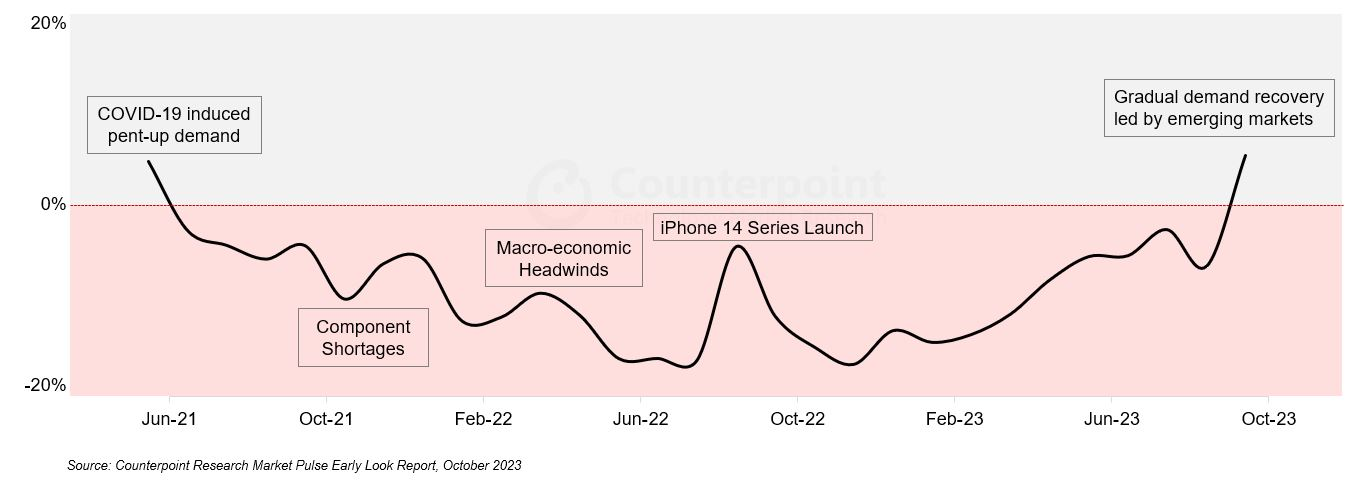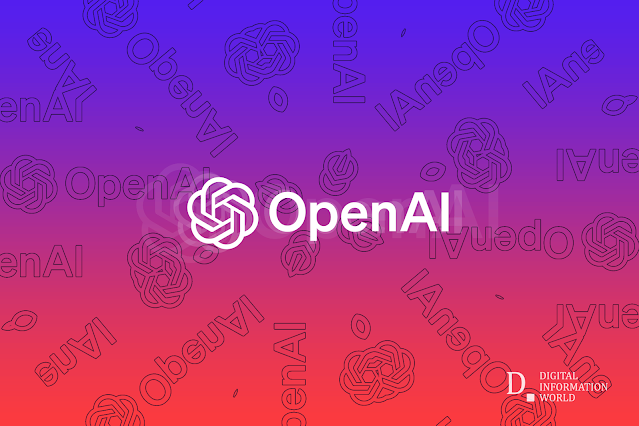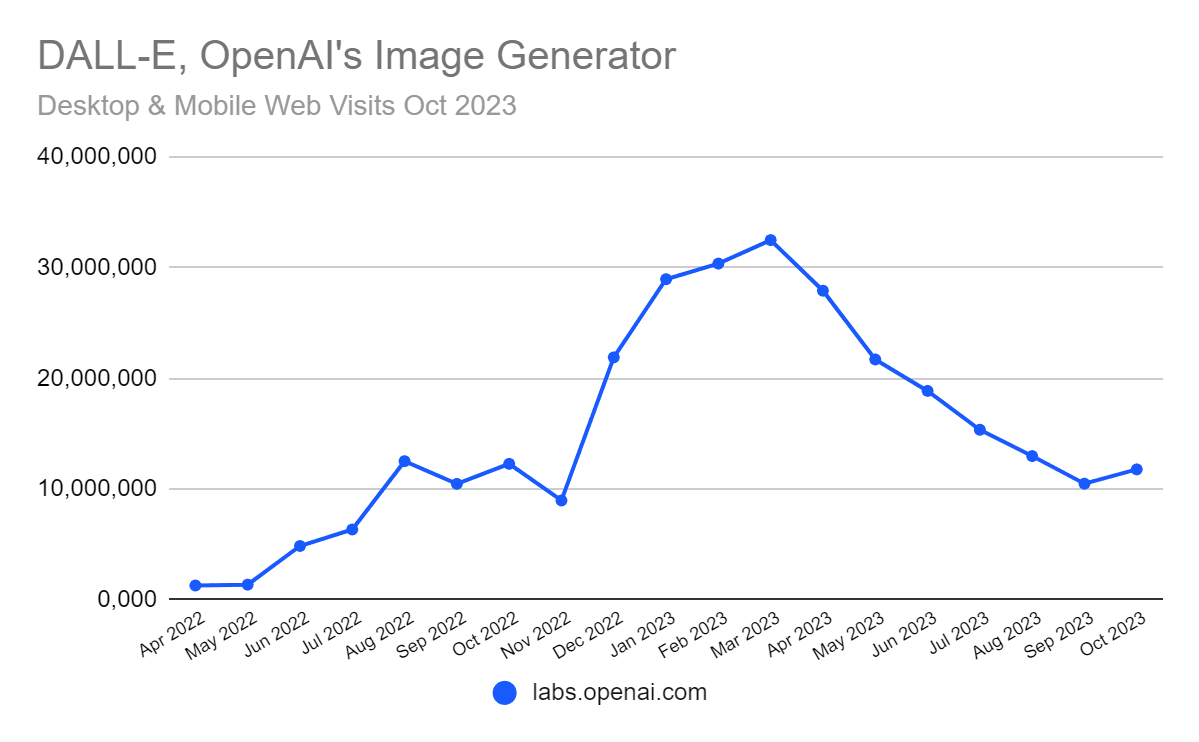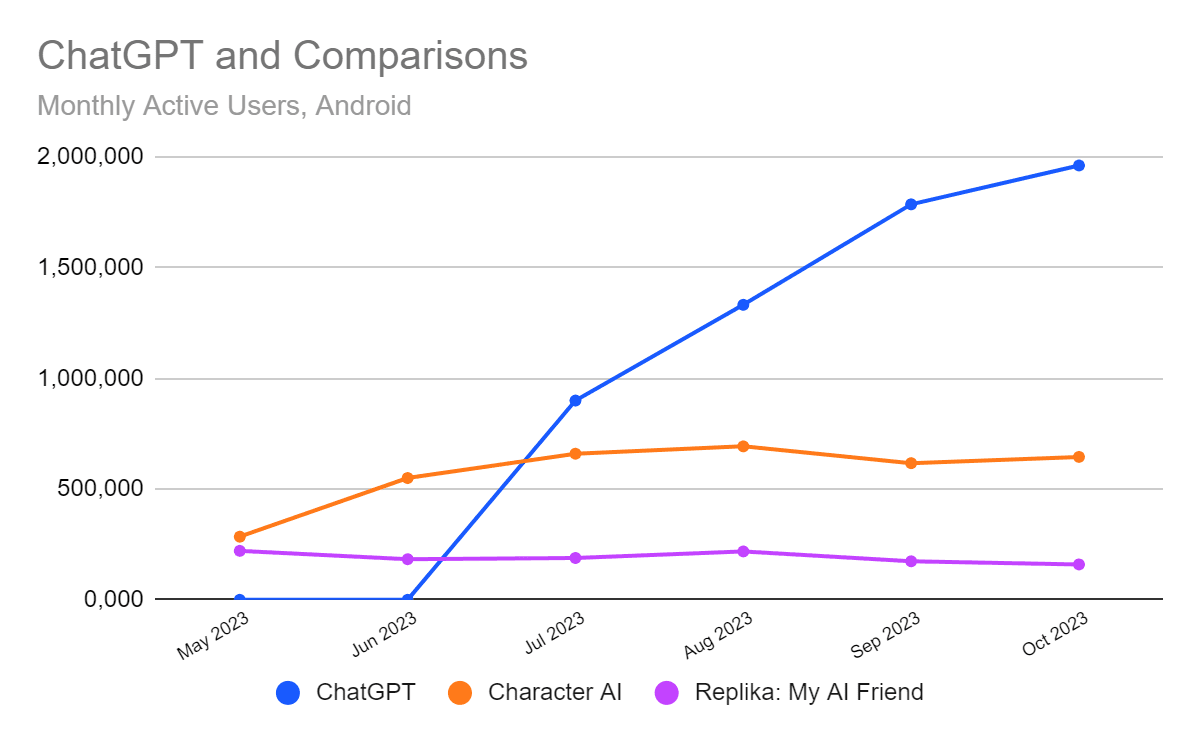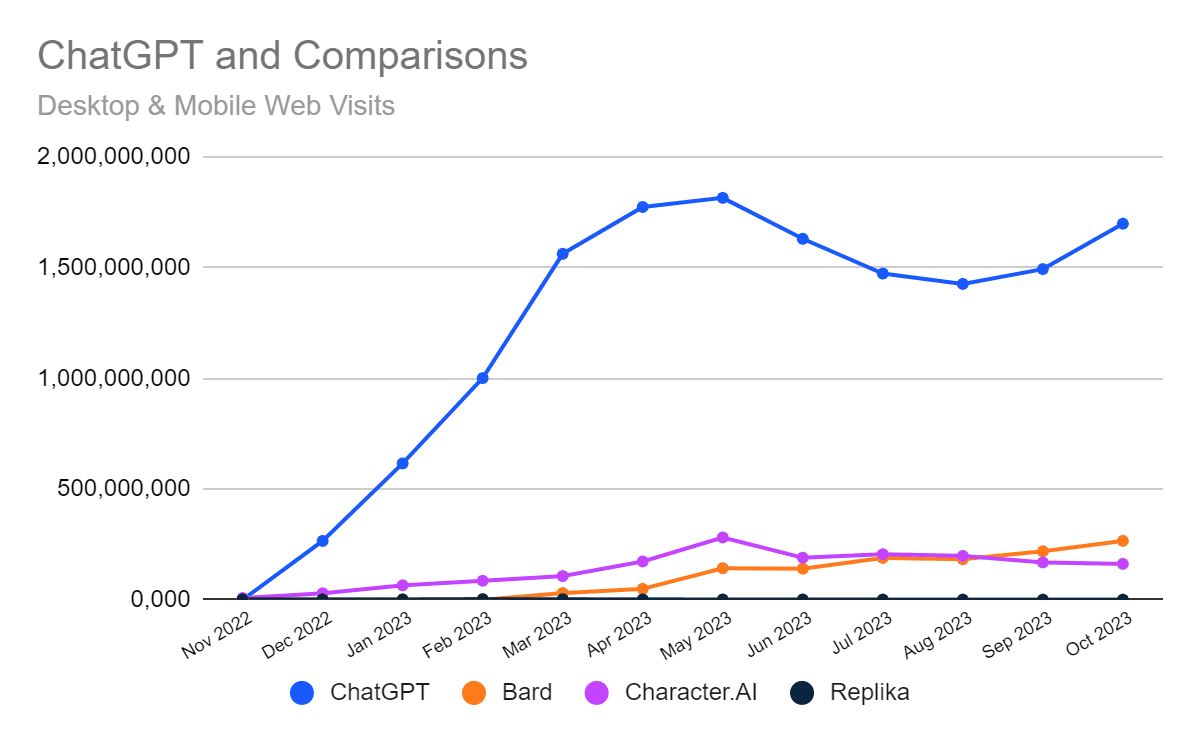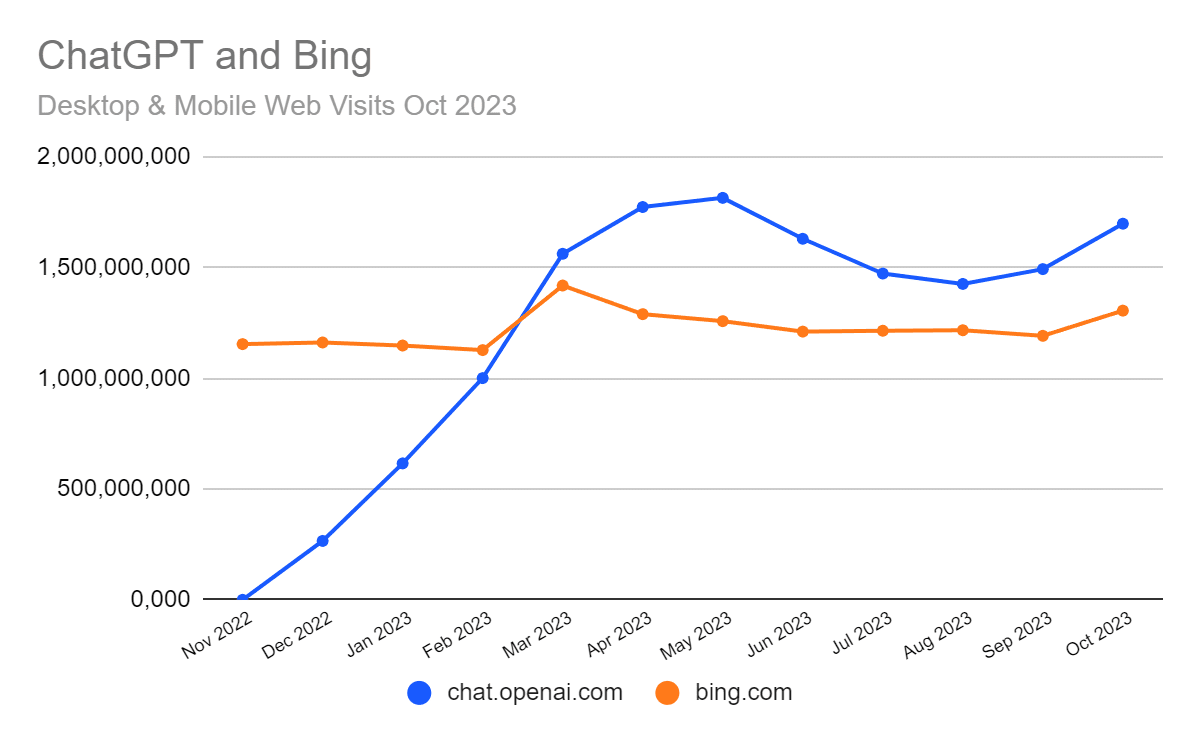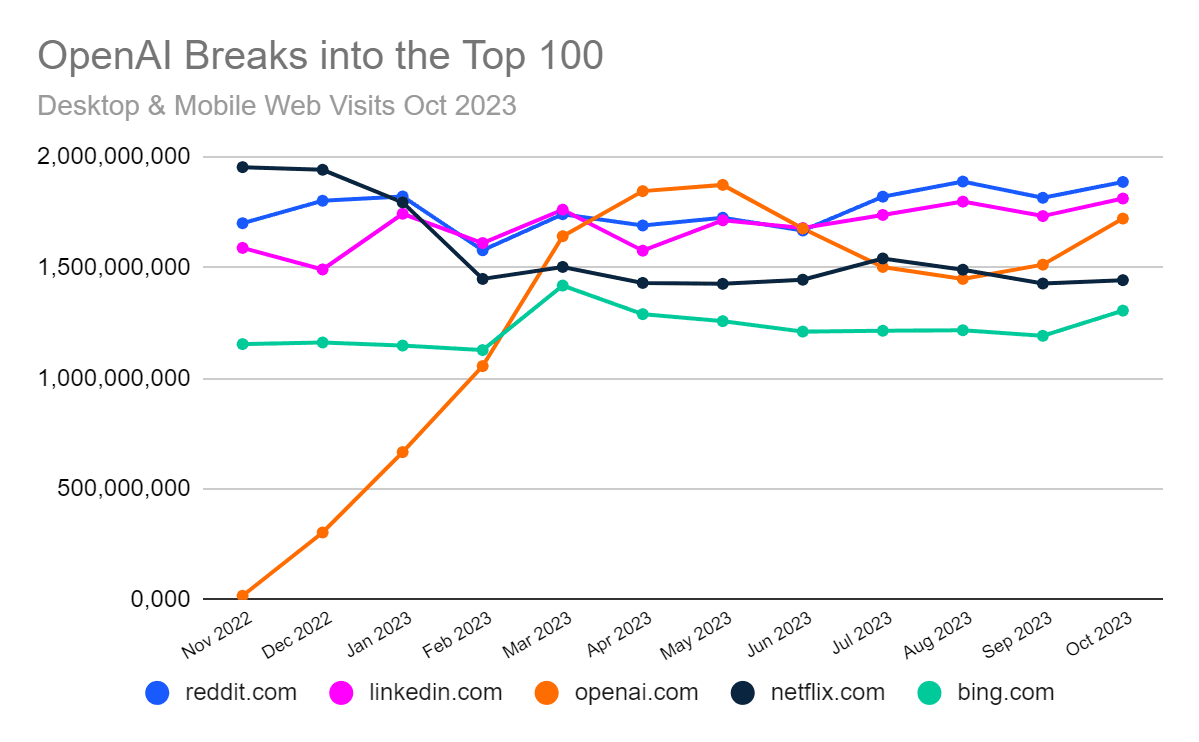We all know how interesting this year seems to be with OpenAI’s ChatGPT. Now November 2023 has rolled around and we know what time it is– ChatGPT’s first ever birthday! ChatGPT was released on November 30, 2022 and in no time, it became one of the most visited domains in the world. It soon became a trend among people and they used it for fun purposes and for some research work too. People from every field in life tried this fine chatbot and found out about how well it interacts with humans.
So, this article is in the honor of ChatGPT and what it has gained in just one year alone. We will discuss all of its milestones step by step so you can see what a great wonder it has become. Let’s start.
A Little Overview of ChatGPT’s Popularity
● As soon as ChatGPT was released on November 30, 2022, about 153,000 accounts visited it via OpenAI.
● When the first week ended, the stats shows that the numbers increased to 15.5 million and touched 58 million by the end of the third week.
● ChatGPT went on growing but it was yet to achieve the record numbers that it did in May 2023. 1.8 Billion monthly visits were recorded.
● As ChatGPT was operated by OpenAI, the company became one of the most visited domains in the world.
OpenAI’s First Step to Success With Dall-E in April 2022
When OpenAI introduced Dall-E in April 2022, it soon became a popular image generator among people. DALL-E used text prompts to generate usable images of different types. The release of DALL-E brought a great amount of traffic to OpenAI’s website, which later touched the sky with the release of ChatGPT.
Birth of ChatGPT: November 2022
OpenAI released a research preview of ChatGPT in November 2022. It was to gain attraction to this new technology. On its first day, a total of 153,000 visits on the site were recorded. Later, the figure became 15.5 million by the end of the first week. By week two, it became 58 million.
ChatGPT was suddenly everywhere; in the news, social media and blogs. As it was getting more well-known as the days were passing, December saw a total of 266 million visits to ChatGPT. It was for sure that ChatGPT would soon reach the one billion mark.
ChatGPT Passed the Exams: January 2023
When January came, OpenAI recorded 617 million visits to ChatGPT. To see its intelligence, ChatGPT was asked to solve law school and business school exams– and it passed. This shows how accurate the results by ChatGPT were and still are.
It was the same month that Microsoft announced that it will use ChatGPT’s tech in Bing search to create an AI chatbot. A congressman from the US, Jake Auchincloss, used ChatGPT to write his speech. He read it in the House to show support to AI models. Many people also started talking about the
changes ChatGPT could bring to jobs and societies.
ChatGPT’s Hallucination: February 2023
As everyone was talking about the greatness of ChatGPT, it was found out that AI chatbots also tend to hallucinate. An analyst said that Bing AI chatbot was talking suspiciously which was unsettling to say the least. Soon, many AI experts said that it was because of the hallucination. AI works like autocomplete in our mobile phone keywords. They don’t think and just type whatever they think looks the best with words before. As AI is yet to be advanced as it should, there are still minor faults in it. OpenAI and Microsoft acknowledge this fault and say that they are working on making this problem go away. A total of 1 billion visits were recorded.
Arrival of GPT-4: March 2023
ChatGPT updated its technology and released GPT-4 for ChatGPT Plus users. GPT-4 is a paid version so casual chatbot users aren’t interested in it. Soon, Google also went on to make its own AI chatbot and came up with Bard.
Character.AI also started working rapidly as ChatGPT was growing but both of the AI models are different in nature. CharacterAI is used to identify historical, fiction and famous people while ChatGPT is used for more serious topics like essay writing, coding etc. But still, many people preferred using CharacterAI on ChatGPT because of its interesting interface.
ChatGPT Crossed Many Popular Websites: April 2023
ChatGPT became one of the biggest websites in the world by surpassing Bing that was using OpenAI’s technology well. In the USA, Bing was still being used more than ChatGPT. Soon, ChatGPT also passed big websites like LinkedIn, Netflix and Reddit. However, it could only maintain it for some time.
ChatGPT also got banned in Italy for sometime because of some privacy issues. The Guardian said that ChatGPT used some citations of the newspaper that were never ever published by them in the first place.
ChatGPT Hit Its Highest Mark: May 2023
In May 2023, ChatGPT had 1.8 billion visits – the highest ever recorded. When it saw an increase in May, it soon started to decline a bit too. Still, it was surpassing Bing, Reddit and other big domains. Now, OpenAI is the 18th most visited domain in the world.
In May, OpenAI also introduced the ChatGPT app for IOS devices.
A Slow Time for ChatGPT: June, July, August 2023
In June 2023, the visits decreased to 1.6 billion. The reason in the USA was the summer vacations as students were using the chatbot for doing homework and writing essays.
In July 2023, University Montana found that ChatGPT has the creativity level of top 1% humans. An investigation on ChatGPT started about how it is feeding false information to people.
A version of ChatGPT for corporate use only was introduced in August 2023.
Traffic Started Increasing: September 2023
Whether the cause was the reopening of schools in September 2023 or something else, the visits on OpenAI’s ChatGPT increased again with 1.5 billion visits. ChatGPT also introduced audio and image prompts for users.
Going Back to May’s Popularity: October 2023
ChatGPT almost recovered to May’s popularity with 1.7 billion visits. It was the 21st most visited domain worldwide, still ahead of Bing and other websites. DALL-E 3 was also combined with ChatGPT Plus and ChatGPT Enterprises. In October, OpenAI attracted 140.7 million visits.
November 2023 A Controversial Month
In November 2023, OpenAI faced big changes. Sam Altman, once a key leader, was suddenly out. The board chose Emmett Shear, once Twitch's CEO, to lead the AI behemoth. This was a big shock for many. But unfortunately, he was gone for good after a big shake-up. Greg Brockman, also a big name, left too. They both thought about starting a new venture. Microsoft and others tried to keep Altman, but, sadly, it didn't work. Many at OpenAI liked Altman, even the COO and Mira Murati, who was CEO for a short time. Now, Shear's in charge, and it's a new start for OpenAI.
Thanks to ChatGPT, OpenAI Became One of the Most Visited Domain
With how much traffic OpenAI was attracting because of ChatGPT, it became one of the most visited website domains worldwide. When DALL-E 3 was launched, 11.8 million visits were recorded as compared to ChatGPT’s release with 1.7 billion visits. It was still an impressive record for OpenAI. Let’s see how much more popular ChatGPT will become in the upcoming days.
Charts H/T:
SimilarWeb
Number of ChatGPT Users (Nov 2023)
Here's the current snapshot of ChatGPT's user base, enriched with fresh insights about the AI giant.
As per
Reuters' most recent figures, ChatGPT proudly hosts about 180.5 million users. In the brisk month of October 2023, the platform drew a staggering 1.7 billion visits.
Delving deeper,
Similarweb's analysis unveils that each visitor to ChatGPT typically explores roughly 4.17 pages per session. Furthermore, an average user dedicates approximately 7 minutes and 36 seconds during each website visit.
When it comes to geographic spread, the United States stands as the paramount user base for ChatGPT. India follows as a strong second. Collectively, the leading five nations constitute roughly a third (32.86%) of all ChatGPT users.
Here's how the numbers break down: United States leads with 15.33%, trailed by India at 7.2%, Colombia at 3.79%, the Philippines at 3.54%, and Japan at 3%. The rest of the world, in aggregate, accounts for 67.14% of users.
Read next:
Unicorn Roundup: The World's Top Startups in 2023
by Arooj Ahmed via Digital Information World


